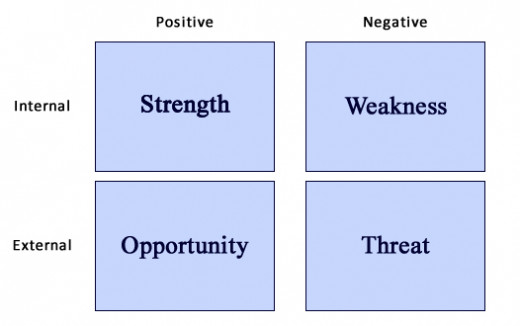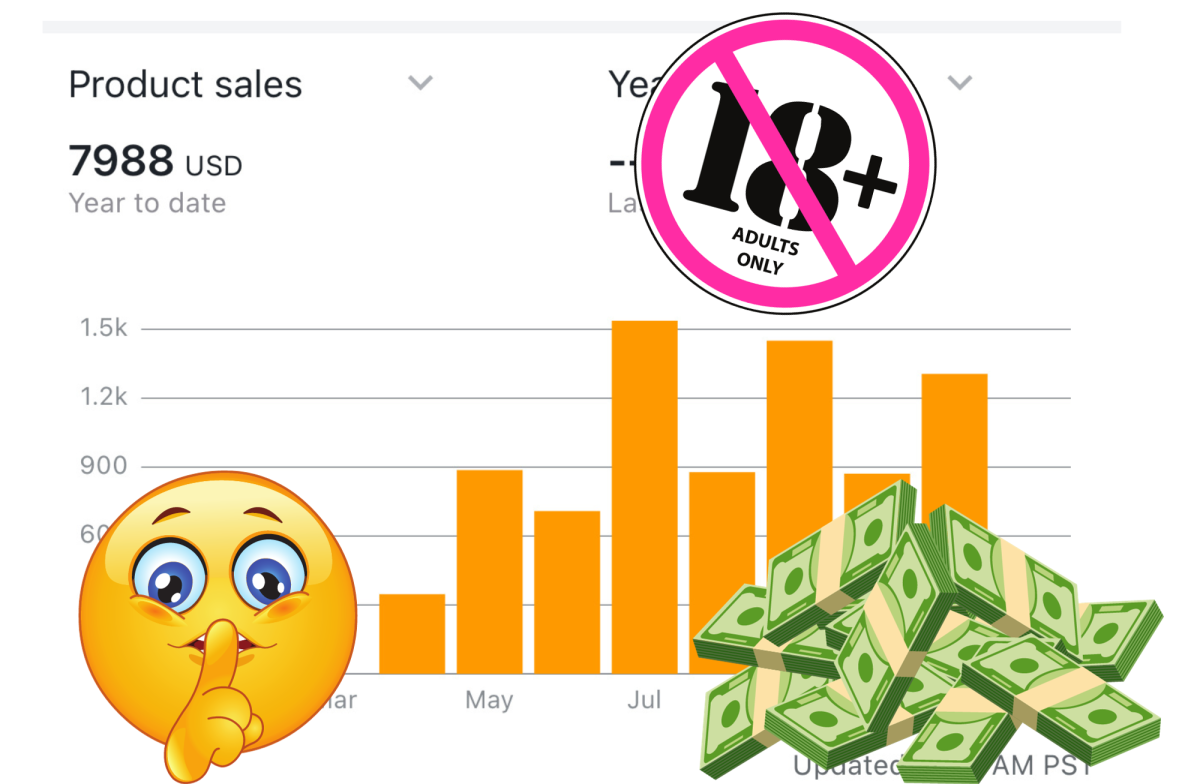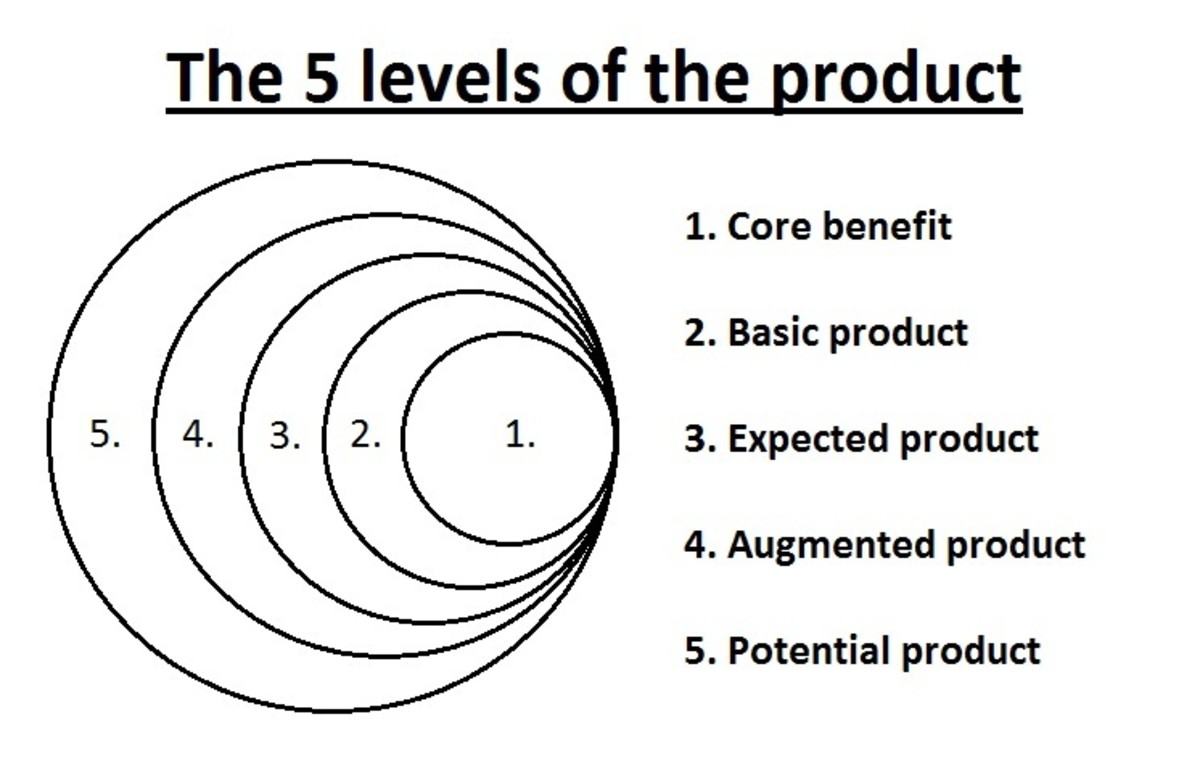Conducting a SWOT Analysis

What is a SWOT
A SWOT analysis is a tool used by marketing professionals in most industries. When devising a strategic marketing plan, one of the first steps is to develop a SWOT. It is used as a tool in getting a perspective of a companies internal strengths and weaknesses, along with external opportunities and threats that may exist.The SWOT will act as a guide in determining what courses of action the company should take when setting out to achieve any goals or objectives. the SWOT matrix is a four box table in which strengths are in the upper left box, weaknesses are in the upper right box, opportunities are in the lower left box, and threats are in the lower right box. This is the basic and traditional layout of a SWOT matrix.
Strengths
| Weaknesses
|
|---|---|
Opportunities
| Threats
|
Things to Remember
It is important to remember several key points when developing a SWOT.
- Be honest about it. Do not pretend the company has no weaknesses or imagine opportunities that aren't really there. Doing this will hinder the truth in the outcome of your analysis and prevent you from developing a attainable strategic plan.
- Try not to confuse the four variables in the matrix. Threats are very different from weaknesses and strengths are very different from opportunities. If confused, the likelihood of a distorted plan increases.
- Strengths and weaknesses are both internal variables that the company has the capability of changing. Opportunities and threats are external and the company has no real control over them.
- Take all aspects of the business into consideration. Do not assume that expansion is a good marketing opportunity when the company is operating with little to no extra financial capital.
Strengths
The upper left box in the SWOT matrix is for strengths the company currently possesses. Strengths will obviously differ depending on the type of business. These can be thought of as advantages a company has in comparison with other companies in the industry. Keep in mind however, these are solely internal factors. It is best to begin with the what is considered the biggest strength first. For example, a strength for Harley Davison may be the fact that their customers are very loyal and do not consider other motorcycle brands when purchasing.
Others examples may include:
- Environmentally friendly company image.
- Large reserve of financial resources.
- Biggest percentage of market share in the industry
Weaknesses
Weaknesses are the second internal factor in a SWOT analysis. They are located in the upper right box of the matrix. These are attributes a company possesses that may be considered disadvantages in comparison to others in the industry. Again, do not confuse these with threats. A large competitor entering the market is not a weakness because it cannot be controlled. After the SWOT is completed, a company may choose to focus on turning weaknesses into strengths.
Examples may include:
- Limited financial resources
- High employee turnover
- Narrow product line and focus
Opportunities
Opportunities are the first external factor in the SWOT analysis. They are located in the lower left box of the matrix. Opportunities are potential courses of action the company could take when developing a specific plan. A company may choose to pursue opportunities in the final executive summary of the marketing plan. Opportunities are not strengths the company possesses. They are external options. Opportunities are pursued when a company chooses to focus on capitalizing on lucrative possibilities rather than building upon strengths or eliminating weaknesses.
Examples may include:
- Tapping into a new market of consumers
- Pursuing a joint venture or partnership with another company.
- Capitalizing on recent deregulation and reduced governmental restrictions on trade.
Threats
Threats are the second external factor to a SWOT analysis and are the bottom right box in the matrix. Like opportunities, threats are current conditions in the market that cannot be controlled by the company. In contrast to opportunities, threats pose possible negative consequences if not addressed. These are not current weaknesses the company possesses, but rather potential threats to a companies overall success and market share in an industry.
Examples may include:
- Entrance of competitors in the market
- Increased governmental regulations on the industry
- Decreasing sales in the overall industry we are in
Remember
A SWOT is not the only tool used in developing a solid marketing plan. It is however the first step and a good starting point to determine where you are as a company relative to others in the industry. All future courses of action will be in someway based on the information laid out in the SWOT analysis. Therefore, it cannot be stressed enough that one needs to be honest and impartial in developing all parts of the matrix.






